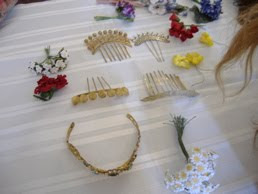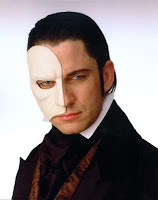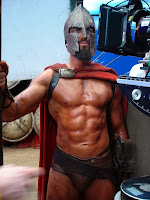 A great big Risky welcome today to debut author Lori Brighton who will give away two signed copies of her book today! Your comment or question enter you into the drawing.
A great big Risky welcome today to debut author Lori Brighton who will give away two signed copies of her book today! Your comment or question enter you into the drawing.
Like a breath of fresh, rain-washed air after a thunderstorm, Wild Heart awakens the senses and speeds up the heart rate…. A great read! Long and Short Romance Reviews
Lori, tell us the story behind the story: what inspired this book?
 This is going to sound odd, but the Disney Cartoon Tarzan. My son was watching the movie a few years back. Around the same time, I saw a documentary on Discovery or some equally educational channel about feral children. I’d seen them both rather close together and thought, hmm, what it would it be like if my hero had been lost in the wild during his childhood? I also tend to like more alpha males and you couldn’t get a male more alpha than one who had survived on his own in a foreign country.
This is going to sound odd, but the Disney Cartoon Tarzan. My son was watching the movie a few years back. Around the same time, I saw a documentary on Discovery or some equally educational channel about feral children. I’d seen them both rather close together and thought, hmm, what it would it be like if my hero had been lost in the wild during his childhood? I also tend to like more alpha males and you couldn’t get a male more alpha than one who had survived on his own in a foreign country.
How easy did you find it to build paranormal elements into your setting and what makes your paranormal elements stand out?
I didn’t set out to make it paranormal but it just kept bugging me, insisting to be let in. I’ve had reviewers say that the paranormal element is subtle and blends well, which is exactly what I wanted.
Leo, the hero, lived a sort of animalistic life in the wilds of India. At first Ella, my heroine, was merely going to be an animal lover, but then I realized, why not make it paranormal? What if Ella had powers to control and sense the feeling of animals? Since Leo is more animalistic than most humans, she would be able to sense his emotions. I thought it would make the story more unique and connect Leo and Ella in a way they wouldn’t have been.
I’ve started calling the book “Heroes set in the Victorian Era.”
Did you discover anything particularly unusual in your research that you’d like to share?
Hmmm, I wrote the book such a long time ago, it’s hard to remember! I’ve had to do a lot of research into the Indian culture and history for this first book and even more so for the second book. So the entire culture as a whole was interesting and new to me.
As for Wild Heart, the one thing that sticks out was how hard it was to take away a person’s title. Leo’s cousin is out to get Leo’s rightful title and the fortune that come with it. The problem was how to get that title from Leo without having him die. Come to find out, it was pretty much impossible to get a title taken away from someone, even if they’d done horrible things. The closest I came was my understanding that if someone was insane, a board might be appointed to take on the responsibilities.
Whom did you identify with most closely when you wrote this book–your hero or your heroine? Why?
Leo, my hero, is very alpha, very blunt very much a left brain sort of man and so very different from me. But I’ve also thrown in some unique qualities to soften him, such as his love of art. Art is definitely something I’ve always enjoyed.
But overall, Ella is more like me. I think in most instances the author associates with the same sex character. Not always, but in most instances. And so far I associate more with my heroines than heroes. Ella loves nature and travel, like me. And like most women, Ella is caring, often at the expense of herself.
What drew you to the Victorian era?
I’ve always loved the Victorian era, probably because it’s the era most noticeable in the United States, especially the Midwest where I grew up. Big, old Victorian homes and those gorgeous dresses and ornate furniture. It was a very elegant time period, but also an era when people were expanding on their knowledge and environment. It was a big era of travel, antiquities and natural science. It’s also the first time period in which you have women leaving the home to work, so in that way there’s more freedom. Everything about it intrigues me.
And as I said in another interview—corsets and tight riding breeches, can’t get much sexier than that!
(Mmmm. Ahem.) Is there anything about the Victorian era you don’t like or that you have trouble incorporating in your writing?
The truth about general hygiene at the time would certainly take the romance away from the story. So it’s always nice to leave out the fact that they probably only took a bath once a week. Let’s not even discuss women and their lack of shaving their legs and underarms. And can you imagine dental hygiene? Have I ruined it for you yet, because I can keep going…lol.
I think one of the most interesting aspects of the Victorian era is the fact that women were suddenly working outside the home, you have a rise of the middle class. There’s a lack of romances novels that focus upon these working women and the long hours and horrible jobs they had to do just to survive. Perhaps that will be my next heroine!
What is there in Wild Heart that you consider risky? (the Risky question!)
Definitely having the paranormal element is a little risky. I’ve tried combining two of the most popular genres- historical and paranormal. I know most readers want either straight historical, or straight paranormal but I had to take that risk because it felt right and I’m hoping it worked, that lovers of both genres will give their nod of approval.
As for the story itself…there’s also a rather risky scene in a Greek folly and then later in a carriage…but I won’t go into detail 😉
What’s next for you?
I have ideas for three new series that I can’t wait to get started on! The problem is deciding which to start first.
As for the next book that will be released, it will be a spin off of Wild Heart. The book isn’t titled yet but it will be out near the beginning of 2011 and will feature a secondary character from Wild Heart as the hero. It takes place in India; it’s very much an action adventure and still contains that paranormal and romance. I’m really excited about it.
Lori will drop by today to chat more about her book, the naughty Victorians, and paranormal romance, so please ask away and your comment or question will enter you into the drawing for a prize.














